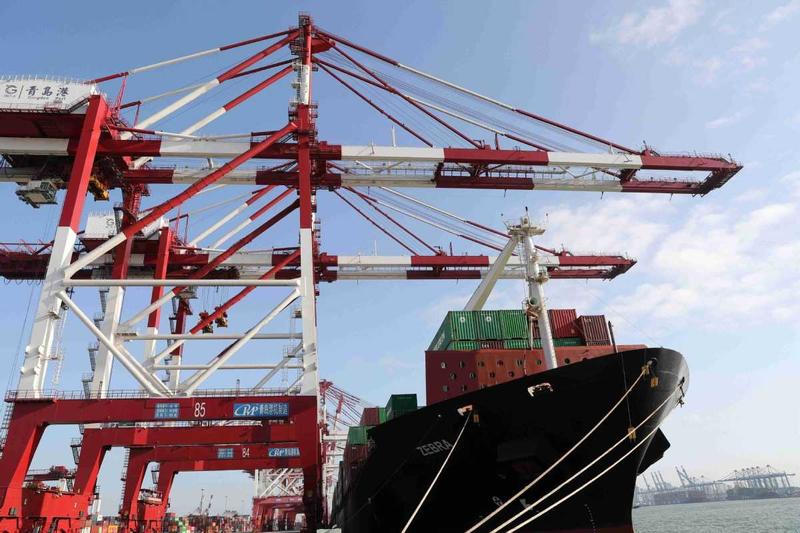 Freighter docks at the Port of Qingdao in East China's Shandong province. The port opened new routes to two RCEP-related destinations on Jan 19. (ZHANG JINGANG / FOR CHINA DAILY)
Freighter docks at the Port of Qingdao in East China's Shandong province. The port opened new routes to two RCEP-related destinations on Jan 19. (ZHANG JINGANG / FOR CHINA DAILY)
The Port of Qingdao in East China's Shandong province opened new shipping routes on Tuesday to two destinations involved in the recently signed Regional Comprehensive Economic Partnership agreement.
One of the routes, linking China and Malaysia, will help build an efficient and low-cost maritime logistics channel.
The other, going to Vietnam, will be used for cold chain logistics, allowing fruits imported from the country to arrive in China in just five days.
According to Customs data, trade between China and the member states of the Association of Southeast Asian Nations was 4.74 trillion yuan (US$732.8 billion) last year, up 7 percent. The two sides became each other's largest trading partner for the first time.
The RCEP means not only lower tariffs, lower barriers and easier market access among signatories, but also higher requirements on the supply chain management efficiency for ports and the shipping industry in the region.
Li Fengli, general manager of Shandong Port Group, which runs the Port of Qingdao, said with the RCEP signed, the launch of the new regional routes will further accelerate economic growth of not just Shandong province but also of North China and even the whole of Northeast Asia.
The RCEP means not only lower tariffs, lower barriers and easier market access among signatories, but also higher requirements on the supply chain management efficiency for ports and the shipping industry in the region
Qingdao has been home to one of China's major ports for importing bulk resources such as crude oil, iron ore, coal and rubber.
But since last year, it has been paying increasing attention to consumer goods trade, especially with other RCEP members, promoting services like cross-border e-commerce, cold chain logistics, bonded warehousing and trade finance.
"The new shipping routes are expected to help Qingdao pick up its pace toward becoming a consumer goods distribution hub in the northern part of China," Li said.
The RCEP Qingdao Innovation Pilot Zone for Economic and Trade Cooperation, construction for which started on Monday, is another of the city's latest attempts to restructure local industries and improve its ability to allocate international resources, as a response to the new economic situation brought about by the giant trade pact.
ALSO READ: RCEP to take effect by end of this year
The pilot zone covers an area of 34.2 square kilometers, with a total investment of 6.8 billion yuan. It will host eight major projects, including an exhibition center, a financial services center, a cruise home-port and an industrial cluster with focus on new materials, artificial intelligence and healthcare.
"Qingdao is a major hub along the new Eurasian continental land bridge economic corridor and a strategic city for maritime cooperation, enjoying natural advantages like RCEP-related regional economic and trade cooperation," said Zhang Shaogang, vice-chairman of the China Council for the Promotion of International Trade, in a video address to the inauguration of the pilot zone.
He called on Qingdao's local government and companies to thoroughly comprehend the RCEP rules, optimize industrial layout and resource utilization and leverage local advantages like geographical location to enhance international cooperation.
Qingdao Mayor Zhao Haozhi said at the ceremony the city has maintained close economic ties with other RCEP members, and the pilot zone will serve as a new, broad platform for expanding economic and trade cooperation with them, facilitating diversified trade and investment opportunities.
READ MORE: China to greenlight RCEP in six months



